#kewa pueblo
Text

Clara Lovato Reyna, Kewa Pueblo (Santo Domingo Pueblo), New Mexico
Photographer: Dorothy Stewart
Negative Number: 004304
110 notes
·
View notes
Text
Number systems in the world's languages
Here’s a neat site all about the richness and diversity of numbering systems in the world’s languages!
Here's one example from the site:
Keresan
Keresan, or Keres, is a Native American language, spoken in New Mexico by the Keres Pueblo people, with seven Pueblos and as many dialects: the Cochiti Pueblo (Kotyit dialect), the San Felipe Pueblo (Katishtya dialect), the Kewa Pueblo (Kewa dialect), the Zia Pueblo (Tsiʼya dialect), the Santa Ana Pueblo (Tamaiya dialect), the Acoma Pueblo (Áakʼu dialect), and the Laguna Pueblo (Kawaika dialect). It is a language isolate family by itself, even though it can be separated in two dialect groups: the Western Keres (spoken by the Acoma and Laguna Pueblos), and the Eastern Keres, spoken by the rest of the Pueblos, and used on this page. The most geographically distant dialects (Acoma and Cochiti) are not mutually intelligible.
Keresan numbers list
1 – ísrkʼé
2 – dyúuwʼée
3 – chameʼée
4 – dyáana
5 – táamʼa
6 – shʼísa
7 – mʼáiʼdyàana
8 – kukʼúmishu
9 – máyúkʼu
10 – kʼátsi
11 – kʼátsi-írskʼá-dzidra
12 – kʼátsi-dyú-dzidra
13 – kʼátsi-chami-dzidra
14 – kʼátsi-dyáana-dzidra
15 – kʼátsi-táamʼa-dzidra
16 – kʼátsi-shchʼísa-dzidra
17 – kʼátsi-mʼáidyana-dzidra
18 – kʼátsi-kukʼúmishu-dzidra
19 – kʼátsi-máiyúkʼa-dzidra
20 – dyúwa-kʼátsi
30 – chamiya-kʼátsi
40 – dyáanawa-kʼátsi
50 – táamʼawa-kʼátsi
60 – shchʼísawa-kʼátsi
70 – mʼáidyanawa-kʼátsi
80 – kukʼúmishuwa-kʼátsi
90 – máiyúkʼuwa-kʼátsi
100 – kʼádzawa-kʼátsi
82 notes
·
View notes
Text
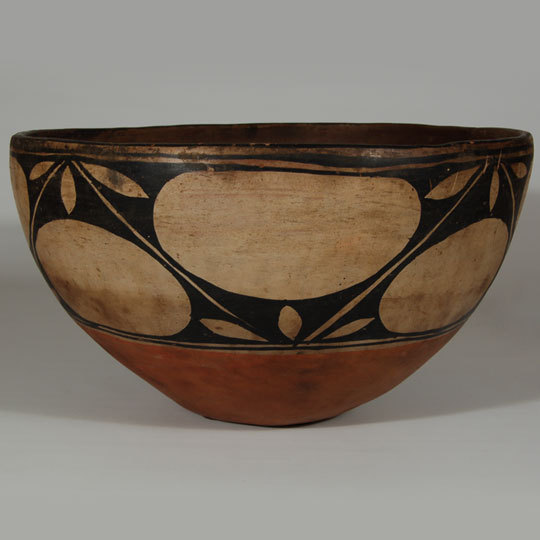
Pueblo Potter Unknown, Origin- Santo Domingo Pueblo, KEWA Medium- clay, pigment Size- 13-1/2” diameter x 7-7/8” deep Item # C3527.
20 notes
·
View notes
Text


#Nixon50 #OTD 1/31/1974 President and Mrs. Nixon viewed a display of Pueblo pottery in the White House State Dining Room. First Lady Pat Nixon is seen here with Kewa (formerly Santo Domingo) Pueblo pottery artist Santana Melchor and her daughter Crucita. Santana Melchor is considered one of the greatest Pueblo pottery artists and was instrumental in keeping traditional methods of the craft alive. Crucita Melchor received a Lifetime Achievement Award from the Southwestern Association for Indian Arts in 1993. (Images: WHPO-E2154-11 & 2155-20A)
1 note
·
View note
Text
The Pueblo Jewelers of the Southwest

In the world of Pueblo artisans, the jewelry makers are second in number to the pottery makers. Over the generations, this ancient craft has taken on numerous forms. On the meticulous end of the spectrum, there are those who make tiny beads, called heishi, first produced at today's Santo Domingo (Kewa) Pueblo in prehistoric times, with hand-pump drills and stone drill bits, and then strung as necklaces. From there, Pueblo jewelry runs from semi-precious stones set in silver to contemporary works, made with gold and precious gemstones. In between are tufa-castings (a process using a carved volcanic stone as a mold for molten silver or gold); hammered metal; handmade silver beads; choruses of tiny bird effigies carved from stone and strung; classic concho belts; large seashells covered in mosaic stonework; and some of the most prized lapidary work in the world, famously done by Zuni Pueblo artists. There are works in stainless steel cut to a fine edge, "shadow boxes" (where a design is cut out of a sheet of burnished silver, which is then affixed to an underlying piece of blackened silver, thereby creating an image in negative space), as well as bracelets, rings, bolo ties, and belt buckles, all worn today by design-savvy buyers from around the world.
Steve LaRance, of Hopi and Assiniboine heritage, gets his tufa on the Hopi Reservation from deposits created by the San Francisco Peaks. To gather what he needs, he has to drive a four-wheel drive pickup, find an isolated spot, and spend a day digging with shovels and picks. The tufa comes out in chunks, in sizes that range from bowling ball to suitcase. This will generally provide enough raw material for a year's work.
Steve and his wife and jewelry-making partner, Marian Denipah, moved from Arizona some years back to Marian's homelands, just a stone's throw from the lazy Rio Grande on Ohkay Owingeh land in northern New Mexico. In addition to their various lines of jewelry, they have also produced a batch of children and grandchildren that have made marks of their own. One daughter is a physician; another, along with her brother, spent a decade as principal dancers for Cirque du Soleil. Today, Steve and Marian oversee a Native youth dance troupe called the Lightning Boy Foundation, which travels the world in an effort to spread Pueblo values and skills.
Santo Domingo is one of the Rio Grande Pueblos in Northern New Mexico. For centuries the Pueblo people have been mining turquoise at Cerrillos, south of what is now Santa Fe, and have been acquiring other turquoise from as far away as Nevada, California and Colorado.
The Pueblo jewelers traveled south to the Gulf and west to the Pacific for shell when they couldn't trade for it. Jet and red colored rock was found nearby and used in mosaics and other jewelry. Eventually coral was introduced by the Spanish and replaced the red rock. These colorful stones were made into beads and mosaics for decoration and ceremonies.
The people of Santo Domingo became known for making the best disc beads and, along with the Zuni people, for producing the best inlay in turquoise, jet, shell and coral on shell and wood bases. The jewelers of Santo Domingo still produce the finest handmade beads and mosaics. Many of their children acquire drills and learn to make beads at a very young age. You can shop online for authentic Pueblo jewelry at PuebloDirect.com.
5 notes
·
View notes
Text
Self-Portrait as Last Pawn Shop in New Jersey
Lately I have not been feeling myself.
I walk around like a figure missing
its ground. I see a braid of smoke
a hand passes through and envy hands,
how smoke stays on skin, the faint
hairs of a cheek a hand brushes against.
Used to be enough to be the blown engine
of a VW outside of Durango, whiskey
we killed watching our father die, a bad
painting I loved because our mother
loved bad paintings, without irony.
Lead sinkers in the gray bar of self---
There! I’d say, strapped to the mast
of a tall ship in a Turner painting,
or a grip dangling from the center pole
of a circus tent above a troupe of dachshunds
trying to find the tiny pedals of tricycles.
I collected myself like I was vying to be
the last pawn shop in New Jersey.
Now I am not even a whir of gnats
on a dirt road, a threadbare cloud
on a ridgeline, the steam riding off
an old man stepping out of a sauna.
Days nothing seems to tie me to me.
The more I live, the more the rucksack
lightens, the more I can’t find myself
in the mirror of the world, and roam
storefronts as if I have misplaced myself.
When I was a kid, I used to keep
a Pringles can filled with volcano rocks
someone once sold as Apache Tears,
one weird ass way of marketing pain.
Gone now, as the name of the boy
I bailed out for stealing CDs from Walmart,
for the girl he crushed on. Which is not
really a crime I explained to the cops.
The girl loved Stevie Nicks so much
I found her stoned under blackberry bramble,
listening to “Landslide” on a Walkman.
Perhaps it matters to say they were Apache or
Pueblo, Inde or Kewa, that they were
minor thieves flung far from home.
Perhaps all they wanted was the ground
inside each other. But even as I say
Landslide, Walkman, I feel the scree
of words, the pawn shop emptying out.
The things that made me are ether now,
as clear as those who went and died
and took what mattered---bodies, a joke,
a late meal that wove itself into morning---
as if they had packed for the afterlife.
And empty and whole and empty,
the air inside me tastes like leaving,
and leaving tastes like rain that never comes.
Which I love like breath on a window,
like someone else drawing a heart, a face
a pleasure in the taking. No wonder,
I am marveling over the demo crew
slaying each other: Fuck wad, lug nut,
waste of skin---Cuts, we used to call them,
nicking wing, heel, gutting into laughter,
then, tender tender, as one with angels
or dogs, where the wound is transom.
The words hold them to the ground,
and I am whatever hovers when they go.
James Hoch, Last Pawn Shop in New Jersey (Louisiana State University Press, 2022)
4 notes
·
View notes
Text
Story of Native American Culture And Jewelry

According to the early European American scholars, Native America was dominated by different clans and tribes. America was home to many different tribes, beliefs, and cultures. During the time, native people traded the food, crafts, fur for the blankets, iron and steel implements, trinkets, firearms etc. with the European explorers and migrants, and they continuously evolved according to the changing circumstances.
Origins of Native American Jewelry
Native Americans were always fond of arts and crafts. During the Neolithic period (7,000 B.C. to 1,000 B.C), Paleo-Indians dug and found multi-color stones in Southwest America. They transformed them into beautiful beads and shells and later they started making jewelry from those beads and shells. They mainly used turquoise, coral and shell to make the jewelry.
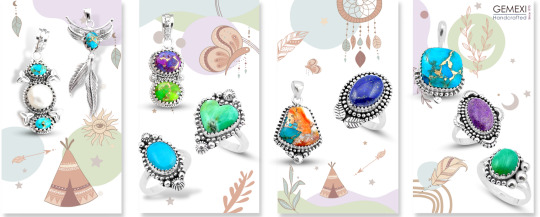
Types of Native American Jewelry by Tribe
Zuni
The word Zuni which means beauty is believed to derive from the Western Keres language (Acoma) word sɨ̂‧ni, or a cognate thereof. The Zuni clan is a creative clan. Traditionally, Zuni women made pottery for storing food and water and crafted their clan symbols and designs on the pottery. They made fetish (small idols of animals) and necklaces from stones, mainly turquoise. With time, Zuni became a master stone-cutter. Zuni artisans have familiarized themselves with materials available from all parts of the world.
Navajo
The word “Navajo” comes from Spanish missionaries and historians who referred to the Pueblo Indians through this term. They started working on silver in the 19th century. Atsidi Sani was the first Navajo silversmith. In the early century, Navajos used to make jewelry with stones but later in the 19th century, they started creating jewelry of silver and turquoise. Navajo jewelry is famous for large turquoise stones and big, heavy silver.
Hopi
According to the Hopi Dictionary, the primary meaning of the word "Hopi" is "behaving one". They considered themselves as well mannered, civilized, peaceable, and polite. Charles Loloma was the first Hopi who made jewelry of gold and multiple stones together. It totally transformed the Hopi jewelry and gave it a completely new look. They are famous for their Kachina dolls and designs of fine jewelry, specially sterling silver jewelry.
Kewa Pueblo
In the early century, Kewa Pueblo people were known as Santo Domingo. They are mainly known for their heishi necklaces.Pottery is an important art form and utilitarian craft from Kewa Pueblo. Kewa Pueblo jewelers are also known for creating pieces with mosaic inlay on shell or bone. They made beautiful and colorful necklaces which were mistakenly identified as “Depression Jewelry”. Kewa jewelers are still making these necklaces in large numbers.
Apache
Apache are distant cousins of Navajo. Before migrating to the southwest, they used to live together. Apache made buckskin shirts, ponchos, skirts and moccasins and decorated them with colorful beadwork.They were known for their beadwork. Both Apache men and women were fond of jewelry. They wore a variety of jewelry made with strung beads of shell and turquoise. A number of necklaces were worn by the apache women simultaneously. They usually used traditional color combinations such as black and white, red and yellow, or pale blue and dark blue. San Carlos Apache jewelers are popular for their jewelry of peridot, green gemstones, necklaces and other jewelry.
Native American Art
Native American were also known for their art and craft work. Three popular arts include painting, basketry, textiles, or photography, as well as monumental works, such as architecture, land art, and public sculpture. Native American ceramic artwork is a popular artform. In the early 1900s, Maria Martinez and her husband Jilian started making traditional black-on-black pottery, later for which San Ildefonso Pueblo became widely known. Ceramics are used for serving and storage vessels, utilitarian cooking vessels, pipes, funerary urns, censers, musical instruments, ceremonial items, masks, toys, sculptures, and a myriad of other art forms. Some of the ancient art work was similar to the western art form. Since the early 1900s, Native American art has had a complicated history with museum representation. The Exposition of Indian Tribal Arts was the first show which held native American art on display on a wide scale. They displayed their art until the 1960s.
Where Can You Buy Collection Of Native American Jewelry?
You can check out the wide collection of native American jewelry at Gemexi. To check the collection at https://www.gemexi.com/explore/featured-jewelry/native-american-style-jewelry
7 notes
·
View notes
Link
Check out this listing I just added to my Poshmark closet: Native American Art Zuni Animal Fetish Carving Winged PIG Handmade ***.
0 notes
Photo

Stewart Billie Sterling Silver Ornate Rectangle Turquoise Ring Sz 8.5 For Women Vintage Sterling Silver Ornate, Rectangle Turquoise Split Shank Long Ring For Women, Signed by Native American Stewart Billie. Has Gorgeous Scrolls, Stamping, Raindrops Rope. Size 8 1/2 Length 2" Weighs 25.2 grams (VPRN38HL47) *************************** *** DM for details *** *************************** Authentic Native American Handmade Jewelry *************************** ✨**Take a look at our shop**✨ Discover our Uniquely Beautiful Collection of Vintage and Native American Jewelry here: 👇⬇️ https://mountainofjewels.com/ #mountain_of_jewels #handmadejewelry #southwestjewelry #nativejewelry, #vintagejewelry #southwesternstyle #sterlingsilver #oldpawn #tradingpost #instausa #navajosilversmith #affordablejewelry #rodeojewelry #southwestlook #cowgirllook #cowgirlstyle #westernwear #cowboylook #quarterhorses #santafestyle #newmexicotrue #turquoise #bohostyle #ranchlifestyle #bestofthesouthwest #shopsmall *************************** *** DM for details *** *************************** (at Kewa Pueblo) https://www.instagram.com/p/Cj9D0cBrgZ8/?igshid=NGJjMDIxMWI=
#mountain_of_jewels#handmadejewelry#southwestjewelry#nativejewelry#vintagejewelry#southwesternstyle#sterlingsilver#oldpawn#tradingpost#instausa#navajosilversmith#affordablejewelry#rodeojewelry#southwestlook#cowgirllook#cowgirlstyle#westernwear#cowboylook#quarterhorses#santafestyle#newmexicotrue#turquoise#bohostyle#ranchlifestyle#bestofthesouthwest#shopsmall
0 notes
Text
0 notes
Photo
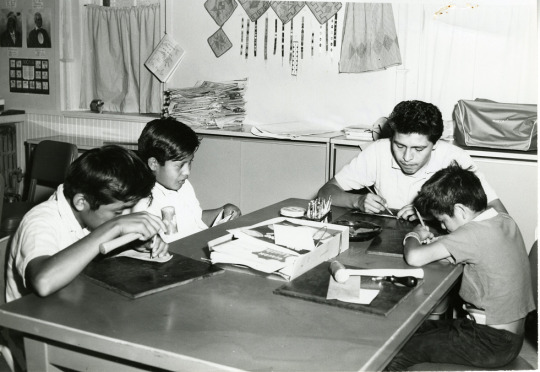
Leather Craft, Neighborhood Youth Corps, Santo Domingo [Kewa] Pueblo, 6/29/1965
File Unit: Photos - Neighborhood Youth Corps - Santo Domingo Pueblo, 1965 - 1965
Series: Mission Correspondence, 1938 - 1956
Record Group 75: Records of the Bureau of Indian Affairs, 1793 - 1999
Image description: Three boys and a man sit at a table with leatherworking tools and materials. They are in various stages of working on leather crafts.
59 notes
·
View notes
Photo
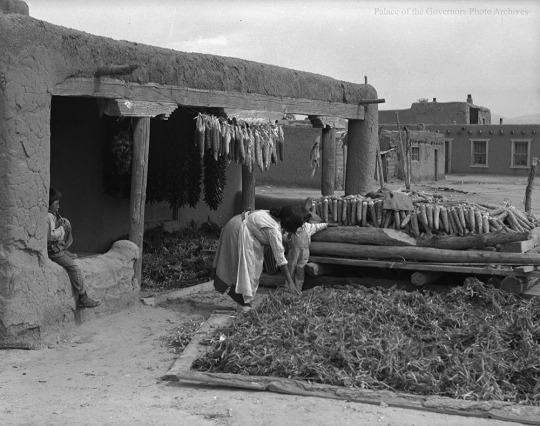
Anecita Tenorio working on harvest, Kewa Pueblo (Santa Domingo Pueblo), New Mexico
Photographer: T. Harmon Parkhurst
Date: 1925 - 1945?
Negative Number: 004311
111 notes
·
View notes
Note
Any witches in Albuquerque, New Mexico?
^^^^^^^^^^^^^^^^^^^^^^^^^
#USA#United States#America#American witch#American witches#Witches of America#New Mexico#NM#Albuquerque#Beles#Los Lunas#South Valley#Estancia#Moriarty#Bernalillo#Acoma Pueblo#Santa Fe#Bosque#Placitas#Kewa Pueblo#San Ysidro#Jemez Pueblo#Ponderosa#San Luis#Bibo#Los Cerrillos Madrid#witchblr#witch#witchcraft#witchy things
12 notes
·
View notes
Text
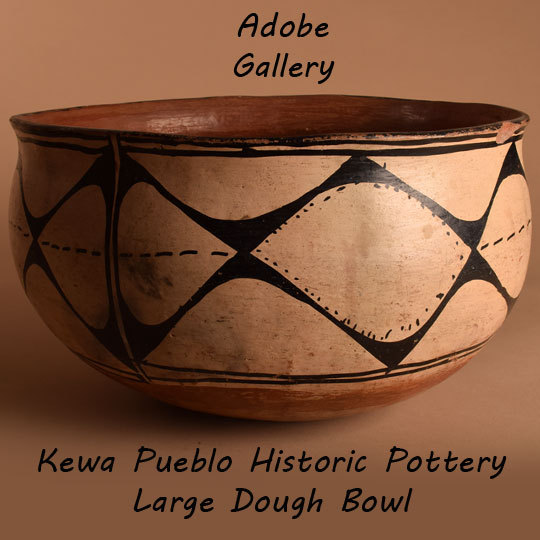
Pueblo Potter Unknown, Origin- Santo Domingo Pueblo, KEWA Medium- clay, pigment Size- 9-1/4” deep x 16” diameter Item # C4119A.
11 notes
·
View notes
Photo

#FabulousFLOTUSFriday and #NativeAmericanHeritageMonth
First Lady Pat Nixon with Kewa (formerly Santo Domingo) Pueblo pottery artist Santana Melchor and her daughter Crucita. The artists were among a group of Pueblo Indians who visited the White House for an exhibition of Pueblo pottery.
Santana Melchor was considered to be one of the finest Pueblo potters and was instrumental in keeping the traditional methods of the craft alive. Crucita continues to work as an artist and received a Lifetime Achievement Award from the Southwestern Association for Indian Arts in 1993. (Image: WHPO-E2154-11)
#fabulousflotusfriday#fabulous flotus friday#native american heritage month#nativeamericanheritagemonth#Pat Nixon#santana melchor#crucita melchor#pueblo#pottery#native american#american indian#kewa#santodomingo
9 notes
·
View notes
Photo



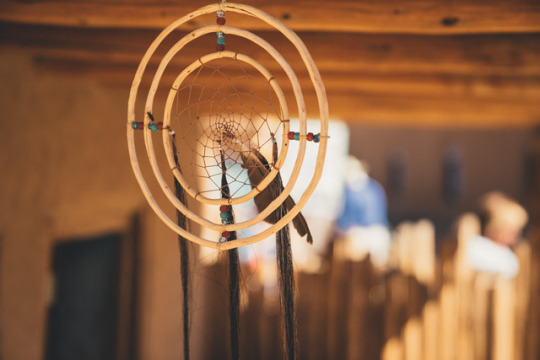


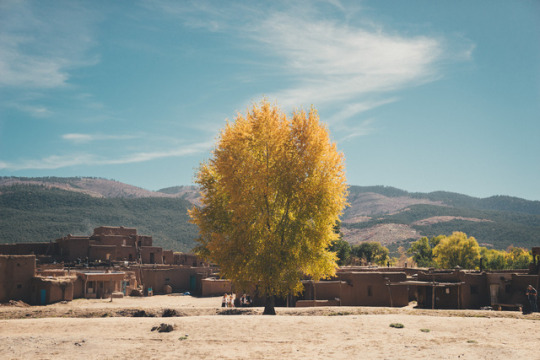



Day 135 - Taos Pueblo, New Mexico - 4818 km
A home among the natives.
Two Pueblo sisters posed for me in the Kewa reservation in New Mexico. I reached this small dusty town via a dirt road and it felt like I left America. Only natives live here. Earlier in the day I cycled through another reservation where the police stopped me and escorted me out again. Apparently I was not welcome. Kewa is a friendly town where I had a chat with locals and enjoyed some Indian taco’s. They still speak their own language and everyone has a double name. An official registered name, often Spanish and a native name which can not be written in Western language.
I’ve been trying to connect with the older native community in Taos Pueblo to take their portrait, but most are hesitant. It’s their tradition not to be photographed. They don’t want their ‘soul to be captured’. You can only respect this and give the people their space.
1 note
·
View note